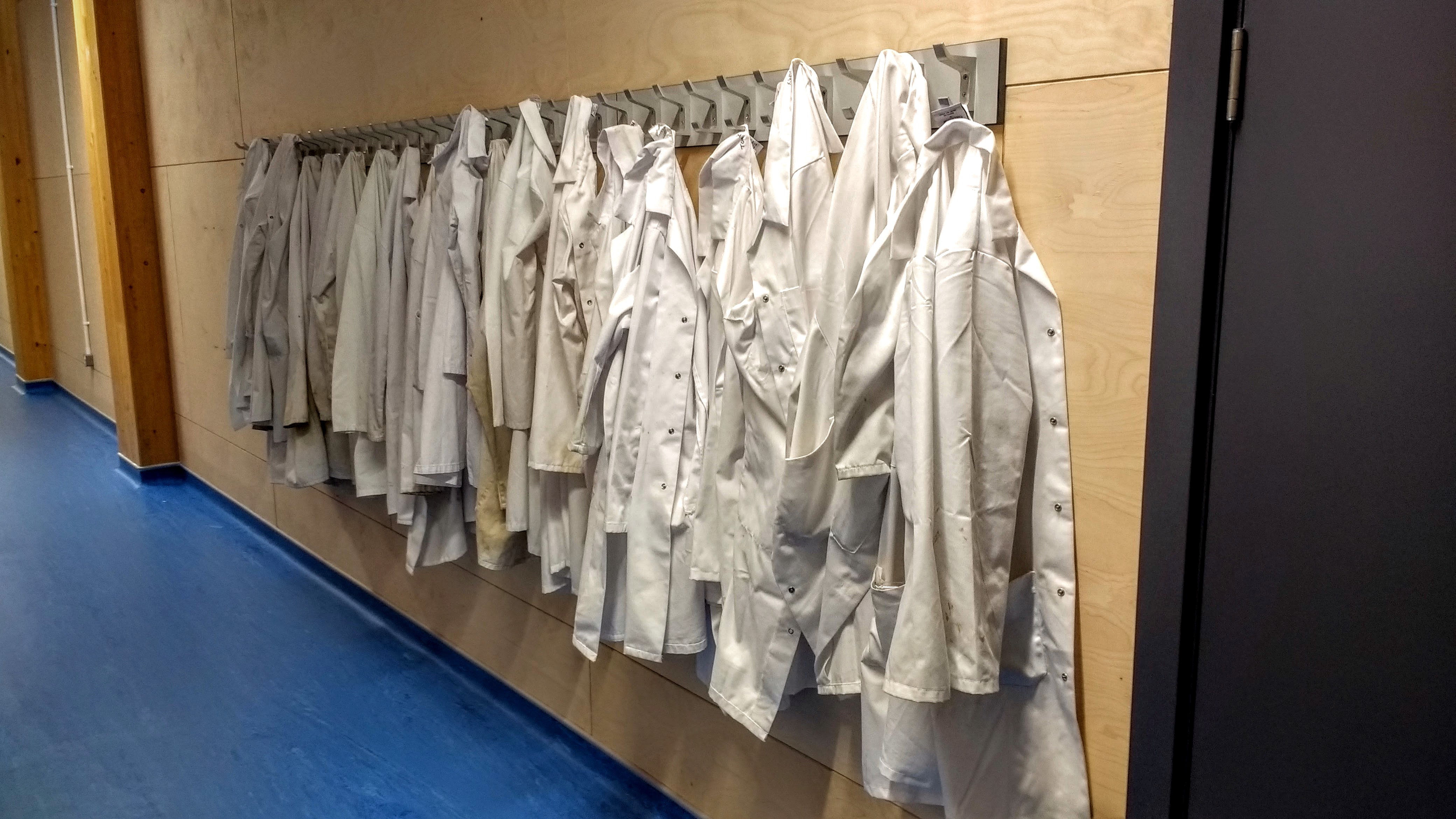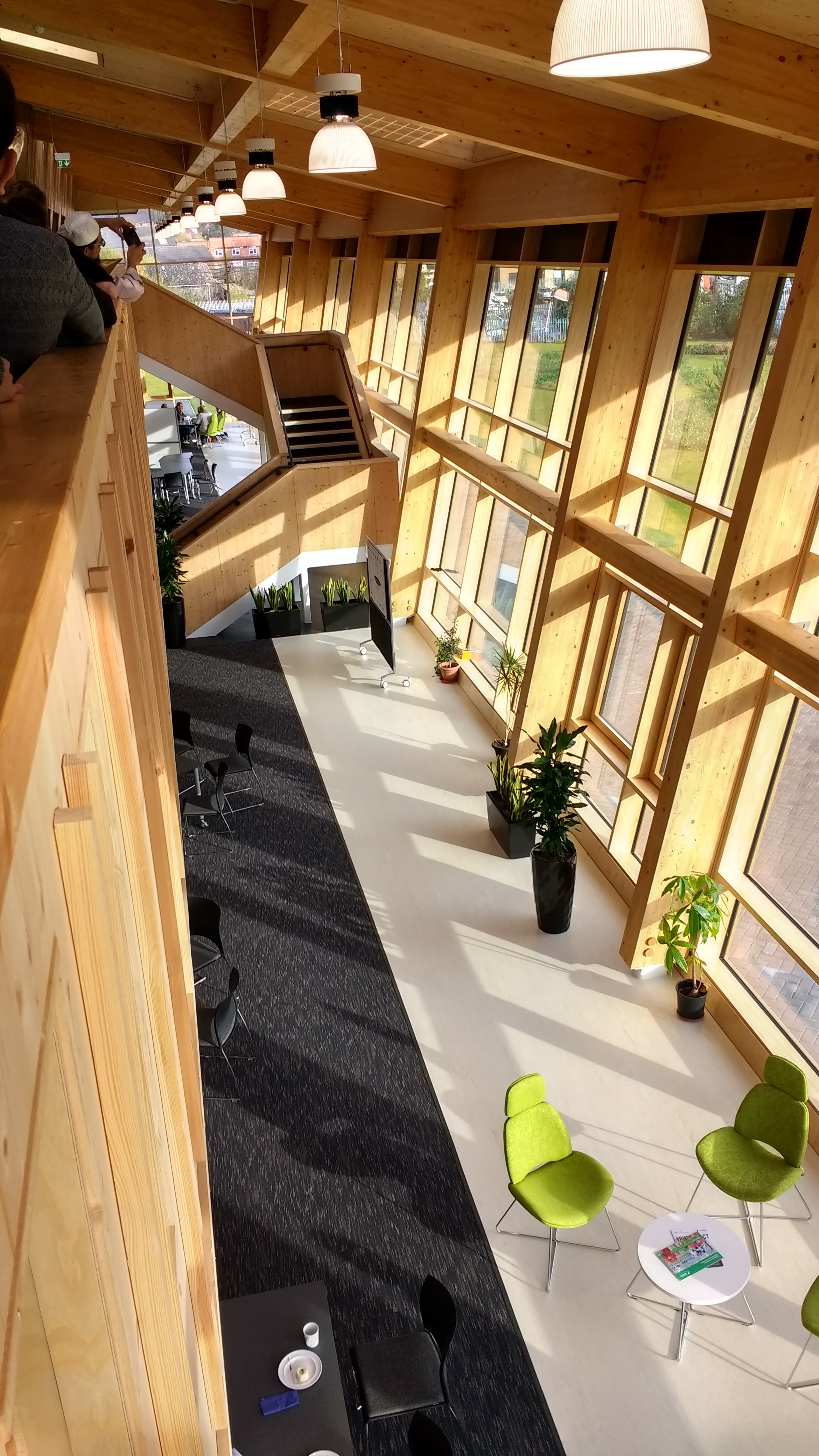
November 11, 2016, by Brigitte Nerlich
The Carbon Neutral Lab: Science, culture, values
This week we held our yearly Synthetic Biology Research Centre (SBRC) Strategic Advisory Board Meeting. The meeting took place in the Carbon Neutral Laboratory which houses the Centre for Sustainable Chemistry. This building has become quite famous because it burned down last year, was rebuilt and opened this year. I should say from the outset that I really love that building; and how could one not. Just look at it!
Art and science
I have often seen the Carbon Neutral Lab from the outside, but had never been inside. When I went in on this rainy day, I found that it was flooded with light. It felt really welcoming. After coffee in the ‘Winter garden’, we met in a meeting room, which, by contrast, did not have any windows. I sat down and stared at a row of drawings on the wall opposite. One said ‘Act of God’, one depicted a phoenix, others were drawings of flakes of ash (I think; the meeting was rather intense and intensive, so I didn’t have time to stop and stare).
During the next coffee break I asked Pete Licence, who was deeply involved in building and rebuilding the lab (and is a member of the SBRC), what these pictures were. He told me that they were drawn by an artist using charcoal, a material that resonates with fire. I still remember the day when the building burned down and I found flakes of ash on cars three miles away from the conflagration. Using charcoal to create drawings to commemorate the blaze was a quite ingenious I thought.
Science and sustainability
I had glimpsed some other interesting pieces of art when going into the building. At lunch, we got a quick tour of the building by David Chambers-Asman (Head of Operations & Administration, Faculty of Science), and it gradually dawned on me that much of the artwork was produced from the remnants of the fire. I took a couple of photos, being especially fascinated by the artistic use of molten metal.
The tour was however not about the artwork sprinkled through the building, but about the ‘state of the art’ chemistry laboratories within it. We were told about how researchers shared the open-plan lab space and equipment, how electricity and water consumption were minimised to make things sustainable, how the building was ventilated and so on.

The tour ended with a look down from the top floor onto the Winter Garden, which by then had filled with sunlight.
Science, responsibility and values
We went back to the meeting room and were then split up into some breakout groups. The one I was allocated to talked about ‘Responsible Research and Innovation’. One of the participants said that it might be a good idea to flag up our ‘values’ on the front page of the SBRC’s website. We all agreed that this was a great idea.
I then thought about the building I had just walked through. For me it embodies the values that the SBRC stands for and the values that people like Pete Licence want to promote through green or sustainable chemistry.
When walking through the labs, David Chambers-Asman had stressed that the design of the labs was not only about sustainability, but also about sharing and joint responsibility, about enabling communication, conviviality and interaction. These are human values that, I believe, should, and increasingly do, underpin all ‘research’ and ‘innovation’. But, of course, a ‘carbon neutral’ lab also takes its responsibility to the planet and its inhabitants seriously and tries not to squander planetary resources. So sustainability values are designed beautifully into the fabric of the building. When leaving at the end of the day, my eyes fell on some ‘burned books’….
I took a photo of the books and went home. When uploading the photos I asked myself: How did they manage to burn such venerable old tomes in a chemistry building? I quickly sent an email to Pete Licence and asked him. He immediately emailed back and told me: “They are electrical switch boxes that were recovered from the fire. The artist then prepared them into this piece, to resemble knowledge and learning.”
This brings me back to art and science. The building not only embodies responsible innovation and responsible research, it also embodies a way to think about art and science that doesn’t separate them but integrates them. It also embodies hope, courage and creativity, as the artwork which is now part of the carbon neutral building emerged from the ashes of its first incarnation. And finally, let’s not forget, the building also embodies knowledge and learning, the most valuable ‘goods’ on our planet, which need to be nurtured and passed on responsibly. Like water, air and fuel, they should not be squandered.
I want to end with a quote from a book entitled Science and Human Values by Jacob Bronowski: “The values of science derive neither from the virtues of its members, nor from the finger-wagging codes of conduct by which every profession reminds itself to be good. They have grown out of the practice of science, because they are the inescapable conditions for its practice… [science] must have the habit of truth, not as a dogma but as a process”. The Carbon Neutral Lab encourages such practice and process and creates the conditions of possibility for human values to emerge and to be upheld in science and culture.
No comments yet, fill out a comment to be the first



Leave a Reply